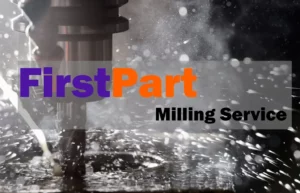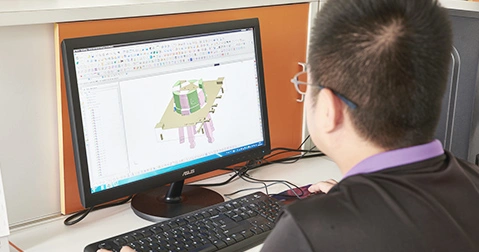The advanced operations involved in CNC machining means that your finished part will host all kinds of debris. From iron filings to oil, lubricant, coolants, chips, abrasives and even dust, machined parts must undergo different type of cleaning and finishing services to deliver the luster and cosmetic quality desired. Cleaning of CNC parts is a crucial step that aids part assembly and packaging. It also prepares the part for any post-processing operations that may be required to bring the part up to standard.
There are 5 simple methods of cleaning CNC machined parts. The choice of cleaning will depend on certain factors such as:
• The material type
The nature of the raw material determines the type of cleaning solvents and solutions that can be used on the finished part without damage.
• The post-processing / finishing operation
Certain finishing techniques require specific types of cleaning to prime or prepare the part for post-production process.
• The size / volume of parts and
The size and dimension of the part equally determines whether the part can be properly cleaned in a water bath or requires another method to reach corners and parts.
• The nature of dirt / debris
The nature of dirt on the part will determine the type of solvent to use in cleaning. It would also determine the method (mechanical or chemical) for cleaning the CNC machined part.
Method 1 – Scrubbing
Scrubbing is a mechanical process aimed at removing oil, sand, dust and other debris by applying some force and solvent to the part. Proper scrubbing can be achieved by soaking your parts in a container filled with solvents like diesel and kerosene. With the aid of a brush or cotton yarn, you can proceed to clean the surface of your part and rid it of oil-based dirt or debris. You may also dip a rag or piece of soft clothing into the solvent and manually clean the part.
The solvents will aid the dissolution of oil and grease debris, and leave your part with a sparkling finish. It is suitable for small volume of parts that are to be used to prototyping or bridge/batched parts.
Method 2 – Water bath
This method of cleaning involves the use of cleaning solvents, and a water bath heated to around 90 degrees Celsius. It is very common for CNC machined plastic parts. This water bath heats the solution, which can be simple soapy water, with the finished parts inside for 180 to 300 seconds. The bubbling action helps to direct the motion of the water towards the part, and the high temperatures encourages the dissolution of common dirt and debris.
After the water bath action, you may elect to use a brush to further clean the parts and access holes and crevices that have not been thoroughly cleansed.
Method 3 – Vibration cleaning
The principle behind the vibration cleaning is to stimulate a manual rinsing action in the presence of a cleaning solution. This is carried out by placing the parts to be cleaned inside the cleaning compartment of the vibrating washer or tumbler. This compartment is usually designed basket-like. Next, the machine is put to work, shaking the parts in the presence of the solution to remove simple dirt and oil stains from the part.
Method 4 – Spray cleaning
Spray cleaning is a very efficient method of cleaning machined parts without expending too much effort. It is recommended that the process occurs at a controlled temperature and pressure. To spray clean your parts, you will need a cleaning fluid in a spray can that can be directed at your part, and wiped afterward. This method is suitable for parts with very straightforward geometries, and those without holes and crevices. It is also very effective for parts with a lot of grease and oil stains.
Method 5 – Ultrasonic cleaning
Ultrasonic cleaning is arguably the most effective cleaning technique for CNC machine operations and CNC parts. The principle basically uses the action of a cleaning liquid (alkaline-based) combined with ultrasonic oscillation to remove tough oil and grease stains from stainless steel, aluminum and other alloy parts.
Ultrasonic cleaning allows for oil removal by constantly sweeping overflow floating oils away from the part till they settle out and exit the solution. The part is removed from the solution after some extent on cleaning and rinsed in water to wash out the cleaning solution. The clean part is then removed from the chamber and dried to remove any lingering water from the part to prevent rust and create a spot-free finish.










